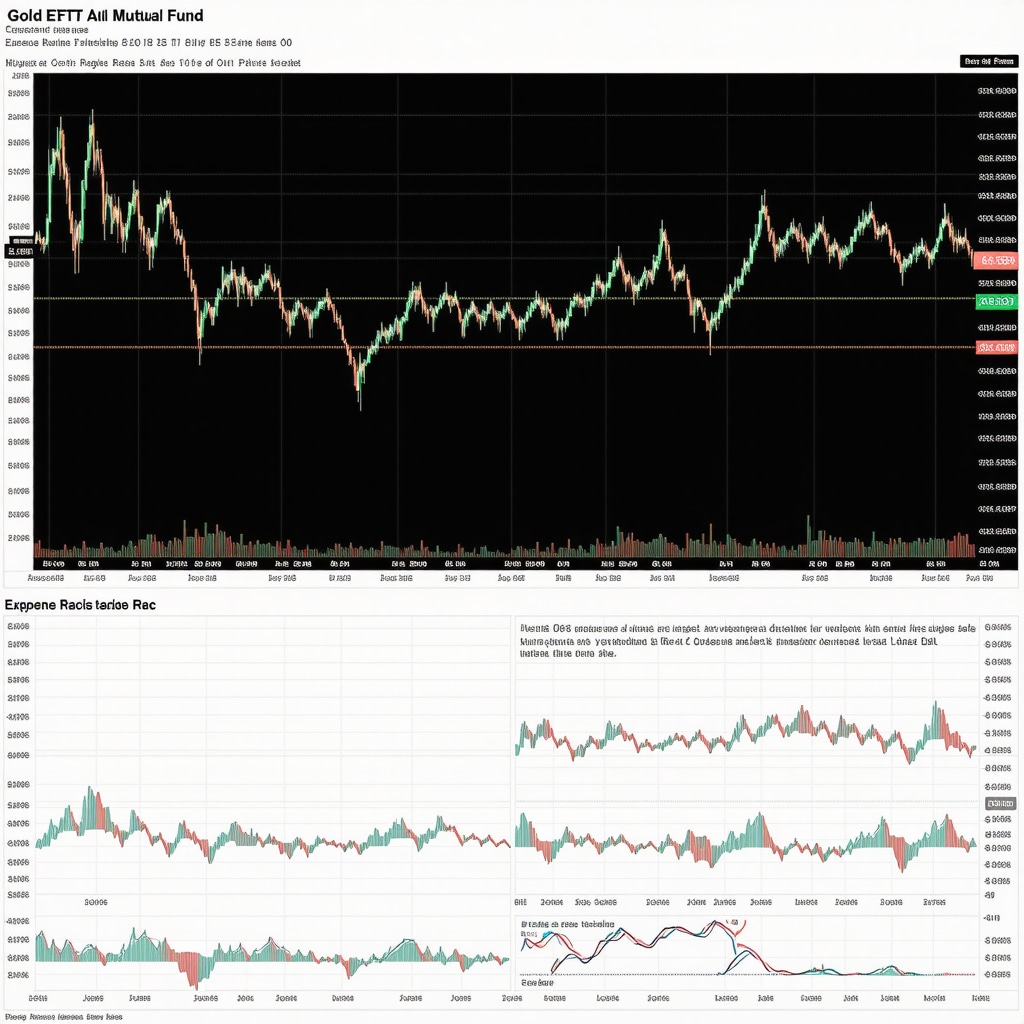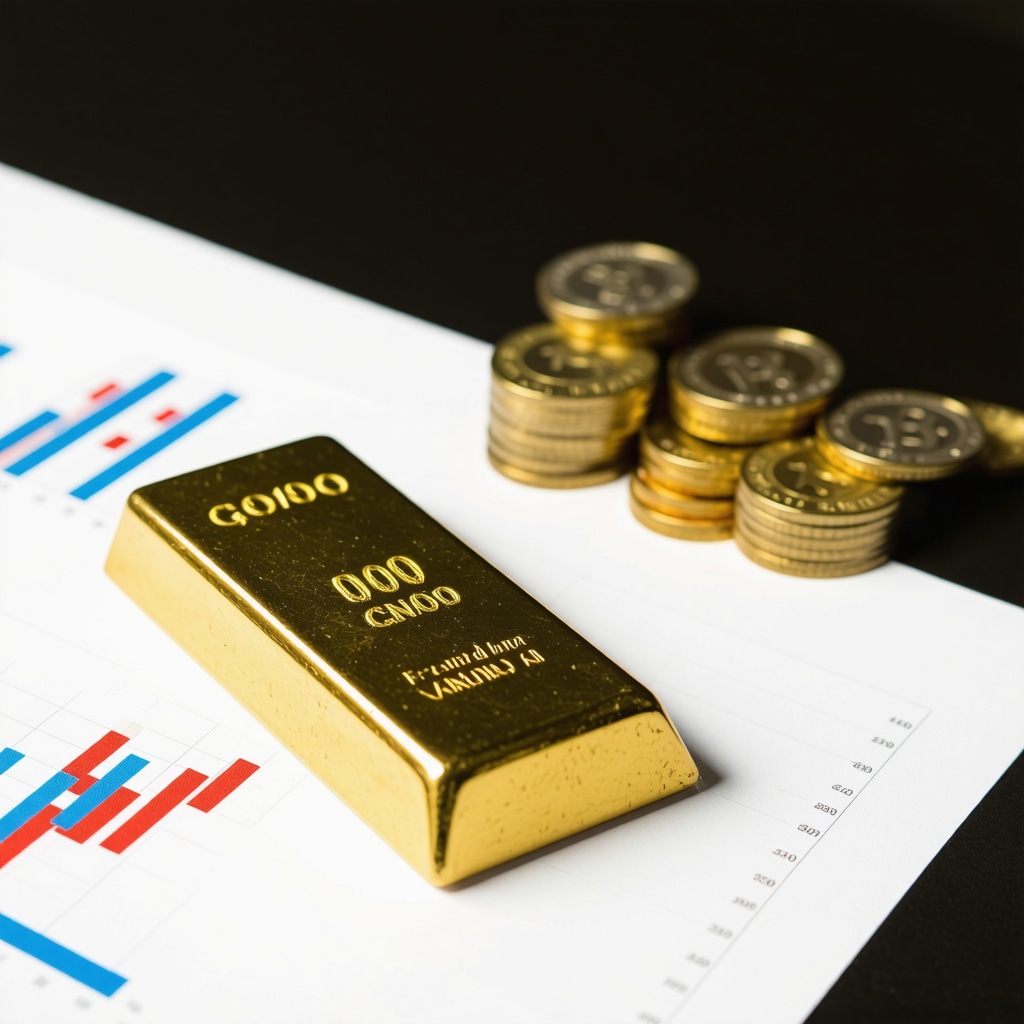Why Gold ETFs and Mutual Funds Are the Unsung Heroes of Your Portfolio
Imagine a financial tool that offers the gleam of gold without the hassle of safekeeping a shiny bar in your attic. Welcome to the world of gold ETFs and mutual funds — a compelling choice for investors seeking stability amid market chaos. In a world where volatility often feels like the norm, these instruments promise a steady income stream, blending the allure of gold with the convenience of modern finance.
Digging Deeper: The Gold Standard of Passive Income?
Gold has always been the go-to hedge against inflation and economic downturns. However, owning physical gold can be as tricky as keeping a cat entertained — it demands attention, security, and a touch of patience. Gold ETFs (Exchange-Traded Funds) and mutual funds, on the other hand, distill that complexity into easy-to-handle investments accessible to just about anyone.
But can a paper asset truly capture the essence of gold’s stability?
Great question. While gold ETFs and mutual funds don’t grant you a treasure chest of bullion, they track the price of gold or invest in gold-related assets, providing exposure without the physical headaches. This means you can ride the waves of gold’s market movements while enjoying liquidity and diversification benefits. Not to mention, you sidestep issues like authenticity verification and storage costs — challenges often discussed in physical gold investments.
Stable Income: Is It Too Good to be True?
Let’s be honest, no investment is a magic money tree. But gold ETFs and mutual funds designed for stable income typically invest in a mix of gold assets and interest-bearing instruments, smoothing returns over time. They can outperform traditional fixed-income investments during inflationary periods — a fact backed by market analysis from Investopedia. This makes them particularly attractive for retirees or anyone looking to shield their nest egg from market shocks.
Choosing Your Golden Ticket: ETFs or Mutual Funds?
It’s the classic showdown. ETFs trade like stocks with real-time pricing and lower expense ratios, offering nimble entry and exit points. Mutual funds, meanwhile, provide professional management and can be better suited for those who prefer a hands-off approach. The choice depends on your investing style and goals. For a deep dive into selecting the right gold ETF for long-term growth, check out this insightful guide on choosing the right gold ETF.
Ready to Spark a Golden Conversation?
What’s your take on gold as a stable income source? Have you dipped your toes into gold ETFs or mutual funds, or are you more of a physical gold purist? Share your stories and insights below — let’s turn this column into a golden forum of ideas and experiences. And if you’re just starting, don’t miss our essential tips for beginners to get your portfolio gleaming.
Dissecting the Income Streams: How Do Gold ETFs and Mutual Funds Deliver Stability?
When considering gold ETFs and mutual funds as vehicles for stable income, it’s crucial to understand the structural differences that influence their income generation. Gold ETFs primarily track the price of physical gold and may pay dividends if the fund holds income-generating assets, such as gold mining stocks or interest-bearing instruments. Mutual funds, however, often blend gold assets with bonds or other fixed-income securities, creating a hybrid income profile. This strategic asset allocation can smooth volatility and provide more predictable payouts.
Investors should assess the fund’s prospectus to identify income sources and volatility exposure. Funds with higher allocations to gold mining stocks tend to have dividend yields but face operational risks. Conversely, those leaning towards physical gold offer price appreciation potential with limited income. This nuanced balance defines your expected cash flow and risk tolerance.
Emerging Trends: ESG and Digital Gold Funds Reshaping the Landscape
The gold investment arena is evolving with the rise of Environmental, Social, and Governance (ESG) criteria and digital gold investment platforms. ESG-focused gold funds prioritize responsible mining practices and sustainable sourcing, appealing to ethically minded investors. Digital gold platforms offer fractional ownership and seamless trading experiences, democratizing access even further.
These innovations raise questions about how traditional gold ETFs and mutual funds will adapt to meet growing demand for transparency, sustainability, and technological integration. For a comprehensive understanding of how to navigate these options safely, explore our detailed insights on choosing trusted gold dealers and digital investment reliability.
Could Integrating Gold ETFs and Mutual Funds with Other Assets Optimize Your Portfolio’s Income and Stability?
Portfolio diversification remains a cornerstone of investment strategy. Integrating gold ETFs and mutual funds with equities, bonds, or alternative assets can mitigate risks associated with any single market segment. But how do these combinations affect income stability?
Research from CFA Institute highlights gold’s role as a hedge against equity market downturns and inflation, enhancing portfolio resilience. However, the income yield from gold-related instruments often trails traditional fixed income. Therefore, blending gold ETFs and mutual funds with dividend-paying stocks or bonds can create complementary income streams, balancing growth and income objectives.
Strategic rebalancing and a clear understanding of each asset’s risk-return profile are essential to maximize income without compromising portfolio stability.
Understanding Expense Ratios and Tax Implications: What Every Investor Must Know
Expense ratios directly impact the net income you receive from gold ETFs and mutual funds. ETFs typically have lower expense ratios compared to mutual funds, contributing to higher net returns over time. However, mutual funds may offer professional management that could justify higher fees for some investors.
Tax treatment also varies. Dividends from gold ETFs may be taxed differently than mutual fund distributions or capital gains from selling shares. Investors should consult with tax professionals to optimize tax efficiency, especially when holding gold investments in taxable accounts.
For deeper guidance on navigating these practical considerations, refer to our gold investment tips for beginners that underscore prudent portfolio management.
Interactive Insight: Share Your Strategies and Discover New Perspectives
How do you balance income stability with growth in your gold investments? Have you experimented with combining gold ETFs and mutual funds with other income-generating assets? Join the conversation by leaving a comment below or sharing your experience on social media. Your insights could illuminate new approaches for fellow investors seeking to harness gold’s potential in 2025.
Unlocking Hidden Income Streams: Leveraging Gold-Linked Derivatives and Structured Products
Beyond the conventional realm of physical gold and straightforward gold ETFs lies a sophisticated ecosystem of financial instruments designed to amplify income stability. Gold-linked derivatives, such as options and futures, alongside structured products incorporating gold components, provide investors with nuanced exposure and potential yield enhancements. These instruments can be tactically employed to capitalize on gold price volatility, generate premium income, or hedge existing positions.
For instance, covered call strategies on gold ETFs allow investors to earn option premiums while retaining upside potential, effectively creating an additional income layer without sacrificing exposure to gold appreciation. Similarly, structured notes combining gold references with fixed-income tranches can offer tailored risk-return profiles that align with income-focused portfolios.
Integrating Macro-Economic Indicators: Predicting Gold Income Stability in Shifting Markets
Understanding how macroeconomic variables influence gold’s income potential is paramount for expert investors. Factors such as real interest rates, currency fluctuations, and geopolitical tensions dynamically impact gold prices and, by extension, the income generated by gold funds.
For example, negative real interest rates often bolster gold’s appeal as a non-yielding asset, enhancing price appreciation prospects, which indirectly supports capital gains within ETFs and mutual funds. Conversely, rising rates might suppress gold prices but enhance yields on interest-bearing instruments held within some funds. Advanced investors track these indicators closely, leveraging econometric models to anticipate shifts and adjust allocations accordingly.
How Do Currency Hedging Strategies Affect the Income Stability of International Gold Funds?
International gold funds expose investors to currency risk, which can materially influence income stability. Currency hedging aims to neutralize exchange rate volatility, preserving income stream predictability. However, hedging incurs costs that may erode net returns, creating a delicate trade-off.
Funds employing dynamic hedging adjust exposure based on market conditions, potentially enhancing income stability but requiring sophisticated management. Conversely, unhedged funds might experience higher income variability but benefit from favorable currency movements. Investors should weigh their home currency risk tolerance and consult fund disclosures on hedging policies to make informed decisions.
For a comprehensive analysis of currency risk management in gold investing, refer to the CFA Institute’s research on portfolio diversification and currency hedging here.
Harnessing Technology: AI-Driven Analytics and Robo-Advisors in Gold Investment Strategies
Artificial intelligence and machine learning algorithms are revolutionizing how investors approach gold ETFs and mutual funds. AI-driven analytics can identify subtle market signals, optimize portfolio construction, and dynamically rebalance holdings for enhanced income stability.
Robo-advisors now offer automated, algorithmic investment solutions incorporating gold assets, tailoring portfolios to individual risk profiles and income objectives. These platforms democratize access to sophisticated strategies once reserved for institutional investors, enabling precise calibration of gold exposure within a diversified income portfolio.
Investors leveraging these technologies gain a competitive edge by continuously adapting to market shifts, minimizing human biases, and unlocking hidden value within gold investment vehicles.
Engage with Us: Elevate Your Gold Income Strategy
Are you leveraging advanced instruments like derivatives or AI analytics to enhance your gold investment income? How do you balance currency risk and cost considerations in international gold funds? Share your sophisticated strategies and challenges in the comments below, or connect with our expert community to deepen your knowledge and refine your portfolio’s gold income potential. Together, we can illuminate the path toward optimized, stable income through gold-focused investments.
Unlocking the Nuances: How Do Expense Structures and Income Distributions Impact Your Gold Investment Returns?
While gold ETFs and mutual funds are heralded for their stability and diversification benefits, a deeper dive into their expense structures and income distribution mechanisms reveals critical factors that can make or break your net returns. Expense ratios, often overlooked, directly affect the compounding power of your investment, especially when pursuing stable income over the long term. For instance, ETFs typically boast lower expense ratios compared to mutual funds, but the latter may include performance fees or management costs that subtly erode income, particularly in funds blending gold assets with fixed-income instruments.
Moreover, understanding the frequency and nature of income distributions—whether dividends, interest, or capital gains—is paramount. Some funds may distribute income monthly, quarterly, or annually, impacting cash flow timing and tax obligations. Investors should meticulously review fund prospectuses to align distribution schedules with their income needs and tax planning strategies. For a thorough primer on navigating these investment nuances, the gold investment tips for beginners offer foundational insights that remain invaluable even at advanced levels.
Elevating Your Portfolio: Can Tactical Allocation to Gold Mining Stocks Within Funds Enhance Income Without Excessive Risk?
Gold mining stocks embedded within certain ETFs and mutual funds introduce a layer of income through dividends, contrasting with the price-appreciation focus of physical gold holdings. Yet, this inclusion also brings operational and geopolitical risks intrinsic to mining enterprises. Expert investors often weigh these risks against the potential for higher income yields and portfolio alpha.
Strategically allocating a portion of your gold investment to funds with a robust lineup of well-managed mining stocks can enhance income streams, provided that due diligence is exercised. Evaluating factors such as the mining companies’ dividend history, geopolitical exposure, and cost structures is essential. As detailed in choosing the best gold mining stocks for long-term gains, blending mining stocks with physical gold ETFs can create a balanced income-growth synergy, albeit with increased volatility considerations.
What Are the Advanced Risk Management Techniques to Safeguard Income Stability in Volatile Gold Markets?
Volatility remains a cardinal challenge even when investing in gold-focused instruments. Advanced investors employ sophisticated risk management techniques such as dynamic asset allocation, volatility targeting, and options overlays to protect income streams. For instance, implementing covered call strategies on gold ETFs can generate premium income while providing a buffer against downside risk—striking a balance between income enhancement and risk mitigation.
Another technique involves dynamic rebalancing guided by macroeconomic indicators, such as real interest rates and currency trends, which influence gold prices and income prospects. According to a recent analysis by the CFA Institute, integrating these approaches can substantially improve portfolio resilience without sacrificing income stability (CFA Institute Research).
Interactive Insight: Share Your Sophisticated Gold Income Strategies and Discover Expert Perspectives
How have you navigated the complexities of expense ratios, dividend schedules, and mining stock allocations to optimize your gold investment income? Have you integrated advanced risk management techniques or AI-driven analytics into your portfolio? Your expert insights are invaluable to our community. Join the conversation below or explore our comprehensive investment tips for beginners to fortify your strategy with proven approaches rooted in both foundational and cutting-edge expertise.

Expert Insights & Advanced Considerations
The Synergy of Hybrid Fund Structures Raises Income Stability
Blending physical gold exposure with income-generating assets like bonds or gold mining stocks within mutual funds creates a nuanced income profile that can smooth volatility and provide more consistent payouts. This hybrid approach requires discerning analysis of fund allocations and risk factors to optimize income without sacrificing gold’s defensive qualities.
Leveraging Covered Call Strategies on Gold ETFs Enhances Income Streams
Advanced investors increasingly utilize options overlays, specifically covered call writing on gold ETFs, to generate premium income while maintaining upside potential. This tactic adds a valuable layer of yield generation and downside risk mitigation, aligning well with stable income objectives in volatile markets.
Currency Hedging Balances Risk and Cost in International Gold Funds
International gold funds face currency risk that can impact income stability. Employing dynamic hedging strategies can reduce exchange rate volatility, preserving predictable income streams. However, investors must evaluate the trade-offs between hedging costs and potential currency gains, tailoring choices to their risk tolerance and portfolio goals.
AI-Driven Portfolio Analytics Elevate Gold Investment Precision
The integration of artificial intelligence and machine learning in portfolio management enables continuous optimization of gold ETF and mutual fund allocations. Robo-advisors and AI analytics identify subtle market signals, adjust exposure dynamically, and enhance income stability by reducing behavioral biases and responding swiftly to macroeconomic changes.
Expense Ratios and Distribution Schedules Are Critical for Long-Term Income
Understanding how expense ratios erode returns over time, especially in funds combining gold with fixed-income assets, is essential. Additionally, aligning income distribution frequency with individual cash flow needs and tax planning can significantly affect net realized income and overall portfolio efficiency.
Curated Expert Resources
- CFA Institute Research Digest: Provides in-depth analyses on portfolio diversification, currency hedging, and gold’s role as a hedge against market volatility, essential for advanced strategic planning (Link).
- BuyingGoldNow.com’s Gold ETF and Mutual Fund Guides: Comprehensive, up-to-date insights on structuring and selecting gold investment vehicles for both growth and income (Guide).
- Investopedia’s Gold Investment Articles: Authoritative articles explaining the nuances of gold as an inflation hedge and its integration into diversified income portfolios (Read More).
- BuyingGoldNow.com’s Advanced Gold Trading Techniques: Strategies focusing on options overlays, derivatives, and tactical asset allocation to maximize gold investment income (Explore).
- BuyingGoldNow.com’s Essential Gold Investment Tips for Beginners: Foundational knowledge that supports building a robust understanding before scaling to more sophisticated strategies (Start Here).
Final Expert Perspective
Gold ETFs and mutual funds stand as sophisticated pillars in the quest for stable income within diversified portfolios. Navigating their complexities—from hybrid asset allocations and expense structures to currency hedging and AI-driven analytics—demands a keen, informed approach. These instruments offer more than just a passive store of value; they are dynamic tools capable of delivering nuanced income streams while buffering against market turbulence.
As the landscape evolves, embracing advanced strategies such as covered call overlays and dynamic hedging can unlock additional layers of yield and stability. For investors serious about harnessing gold’s potential, continuous education and engagement with expert resources remain indispensable.
We invite you to deepen this dialogue: share your advanced gold investment tactics, explore innovative approaches, and connect with a community committed to mastering the art and science of gold income generation. Explore our essential tips for beginners to build or refine your strategy, and let’s collectively elevate the conversation around gold ETFs and mutual funds as stable income vehicles.











It’s fascinating how gold ETFs and mutual funds have evolved into such sophisticated tools for generating stable income. I personally have invested in a few gold ETFs that track physical gold, but I’ve also started exploring funds that include gold mining stocks for a higher yield. The balance between risk and reward is delicate, especially with the operational and geopolitical risks associated with mining companies.
What strategies have others found effective for managing these risks while still aiming for consistent income? I’ve been considering options overlays like covered calls on some of my gold ETF holdings to boost income without overly sacrificing upside potential. Has anyone here tried similar approaches or has insights on the best mix of physical gold versus mining stocks for stability?